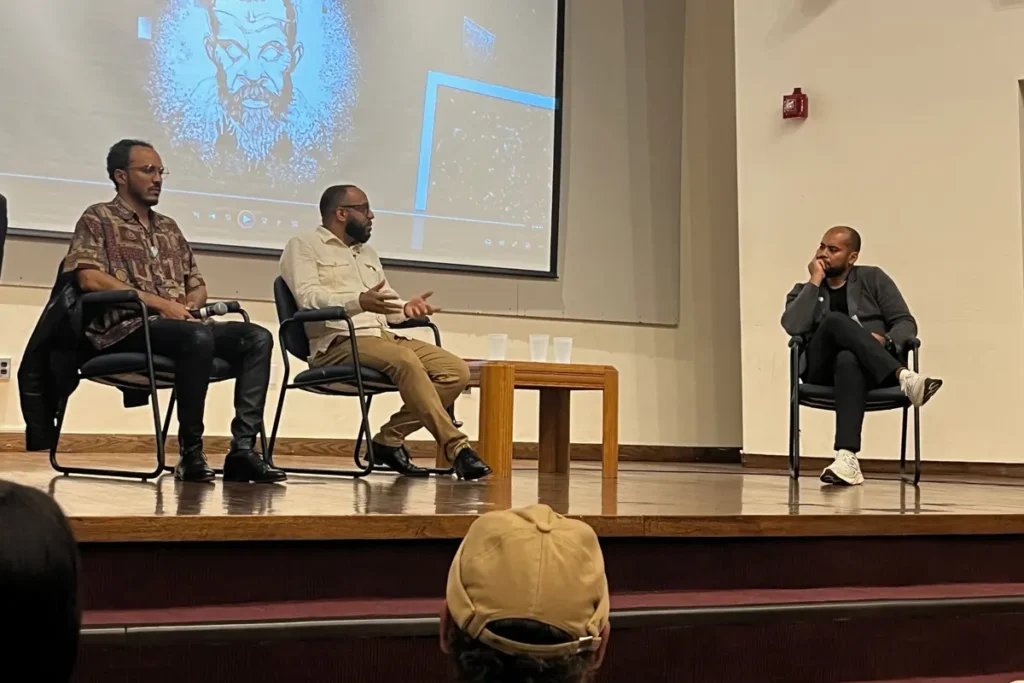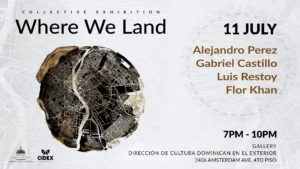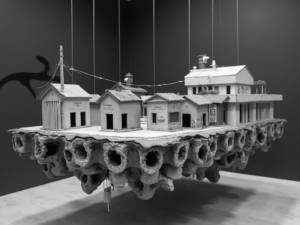On September 19th, I attended a panel discussion at Lehman College that explored Dominican culture, comics, and especially the figure of Papá Liborio. Moderated by Rey Andújar, the panel featured Jonathan De Oleo Ramos and Gabriel Castillo Campusano. This year marks the 102nd anniversary of the death of Olivorio Mateo Ledesma, known as Papá Liborio, a messianic leader, healer, and Dominican revolutionary, who was assassinated on June 27, 1922, in “El Hoyo del Infierno.”

Context of His Death
On that day, while Olivorio was conducting the rituals of his cult, a detachment of the Dominican Military Police stormed his camp. The shootout resulted in the deaths of Olivorio, his son Eleuterio, and several followers. Reports from the time documented the seizure of weapons and ammunition. His body was taken to San Juan, where thousands came to pay their respects. Authorities handled his burial discreetly, and an article in El Caribe stated that his death marked the end of his cult.
Who Was Papá Liborio?
Born on April 19, 1876, in San Juan de la Maguana, Liborio was the son of farmers. From a young age, he worked in the fields and distinguished himself for his skills. In the early 20th century, he emerged as a messianic figure, attracting many who sought healing and spiritual guidance, becoming a messiah for numerous Dominicans.
A Defender of the Oppressed
The liborista movement arose in a context of rural crisis, where peasants lost their livelihoods. The U.S. occupation in 1916 intensified this situation, and Liborio became a defender of the farmers, forming an army to resist. Between 1916 and 1922, he confronted the occupying forces multiple times, being considered one of the most dangerous guerrillas by the government.

Palma Sola: A Graphic Novel that Conquers the World
The graphic novel Palma Sola, by Gabriel Castillo Campusano, has achieved a significant milestone by winning bronze in the manga category at the 13th Japan International Manga Award in 2020. With this victory, the Dominican Republic became the first country in Central America and the Caribbean to receive recognition in this prestigious competition.
Palma Sola recounts the tragic massacre of peasants that occurred in 1962 in Las Matas de Farfán, a dark episode perpetrated by Dominican authorities. This event, along with the April Revolution of 1965, deeply marked the second half of the 20th century in the nation, leaving an indelible mark on collective memory. Castillo Campusano’s work stands out not only for its artistic quality but also for its ability to tackle sensitive and relevant themes in Dominican history, offering a perspective that invites reflection on violence and resistance in the rural context of the country.
The Ventura Rodríguez brothers, also linked to the olivorismo movement, suffered the violence of those who, behind masks of power, impose their interests. With a great command of tension and exquisite drawing, Castillo narrates the decline and rebirth of the liborista movement, exploring a forgotten part of Dominican history in an accessible and captivating manner.
The Legacy of Liborio
The story of Papá Liborio ended in an ambush, but his legacy endures. His death became a symbol of resistance, despite being often overlooked by mainstream historiography. Today, Liborio remains central in Dominican popular culture, with followers who pay homage to his figure. Salves are sung, such as: “They say Liborio is dead; Liborio is not dead at all!” keeping his legacy alive.
As a descendant of Liborio, I feel a deep pride in his story. It is vital to recognize his contribution to our culture and to ensure that his life is studied in schools and universities. Liborio Mateo, the Living Saint of San Juan, deserves to be considered a Cultural and Religious Heritage of the Dominican Republic.









